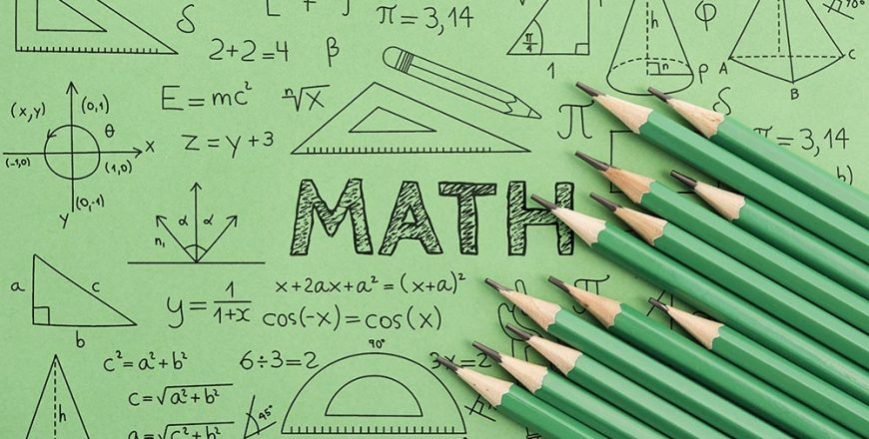PHYSICS GRADE 12

COURSE DESCRIPTION:
- Electrostatic Potential and Capacitance
- Current Electricity
- Moving Charges and Magnetism
- Magnetism and Matter
- Alternating Current
- Electromagnetic Waves
- Electromagnetic Induction
- Ray Optics and Optical Instruments
- Wave Optics
- Dual Nature of Radiation and Matter
- Atoms
- Nuclei
- Semiconductor Electronics; Materials, Devices, and Simple Circuits
- Communication Systems
- Electric Charges and Fields
Electrostatic Potential and Capacitance
1
Introduction
2
Electrostatics of Conductors
5
Effect of Dielectric; Combination of Capacitors
6
Energy Stored in a Capacitor
7
Solved Problems
Current Electricity
1
Introduction
2
Limitations of Ohm’s Law ; Resistivity of Various Materials
3
Temperature and Resistivity ; Combination of Resistors
4
Electrical Energy; Power; Cells; EMF; internal Resistance
5
Cells in Series; Kirchoff’s Rule
6
Wheatstone Bridge; Solved Problems
7
Potentiometer
Moving Charges and Magnetism
1
Introduction
2
Biot Savart Law – Direction of Magnetic Field
3
Magnetic Field in the Axis of Circular Loop
4
Ampere Circuital Law
5
Cyclotron
6
Circular Motion, Solenoid and Toroid
7
Magnetic Field Between 2 Wires Carrying Current
8
Torque on Current Loop, Magnetic Dipole
9
Magnetic Moment, Circular Current Loop as a Magnetic Dipole
10
The Moving Coil Galvanometer, Sensitivity
Magnetism and Matter
1
Magnetism and Matter; Properties of Magnetic Field Lines
2
Bar Magnet as a Equivalent Solenoid
3
The Dipole in a Uniform Magnetic Field ; Magnetism and Gauss’s Law
4
The Earth’s Magnetic Field , Magnetization, Magnetic Intensity – Part 1
5
Magnetization and Magnetic Intensity; Magnetic Properties of Materials – Part 2
6
Paramagnetism; Ferromagnetism
7
Relationship between B
Alternating Current
1
Introduction
2
Effective Current and Effective Voltage ;AC Voltage Source Connected across a Resistor
3
Representation of AC Current and Voltage by Rotating Vectors
4
AC Voltage Applied to an Inductor
5
Activity to Understand the AC Voltage is Connected to an Inductor
6
AC Voltage Source Connected across a Capacitor
7
AC Voltage Source Connected to a Series LCR
8
Disadvantages of Phasor Method;Analytical Solution
9
Resonance
10
Sharpness of Resonance
11
Power in an AC Circuit
12
LC Oscillations
13
Analogies between Mechanical & Electrical Quantities
14
Transformers – Part 1
15
Transformers – Part 2
Electromagnetic Waves
1
Introduction
2
Displacement Current; Electromagnetic Waves
3
Properties of Electromagnetic Waves; Electromagnetic Spectrum – Part 1
4
Electromagnetic Spectrum – Part 2
5
Electromagnetic Spectrum – Part 3
Electromagnetic Induction
1
Introduction
2
Electromagnetic Induction; Experiment 6.3; Magnetic Flux
3
Faraday’s Law of Electromagnetic Induction; Lenz’s Law of Conservation of energy
4
Motional Electromotive Force
5
Energy Consideration; Eddy Currents – Part 1
6
Eddy Currents – Part 2; Magnetic Braking; EM Damping;Induction Furnace; Electric Meter
7
Inductance
8
Mutual Inductance
9
Self Inductance
10
Self Inductance Plays Role of Inertia
11
AC Generator
Ray Optics and Optical Instruments
1
Introduction
2
Spherical Mirrors
3
Focal Length
4
Mirror Equation; Linear Magnification
5
Refraction
6
Lateral Shift
7
Atmospheric Refraction; Total Internal Reflection
8
Mirage; Diamond Prism; Optical Fibres
9
Refraction by a Lens
10
The lens Makers Formula; Power of Lens; Combination of Thin Lenses in Contact
11
Refraction through a Prism
12
Dispersion
13
Rainbow formation; Scattering of Light
14
Human Eye
15
Eye Defects
16
Microscope
17
Compound Microscope
Wave Optics
1
Introduction
2
Huygens Principle; Refraction of Plane Wave
3
Refraction at a Rarer Medium; Coherent and Incoherent Addition of Waves – Part 1
4
Constructive and Destructive Overlap
5
Coherent and Incoherent Addition of Waves – Part 2; Doppler’s Effect
6
Young’s Double Slit Experiment
7
Path Difference; Fringe Width
8
Sustained Interference; Diffraction
9
Maxima; Secondary Maxima; Comparison between Diffraction and Interference
10
Resolving Power in Optical Instruments; Diffraction in Resolving Power of Telescope – Part 1
11
Diffraction in Resolving Power of Telescope – Part 2; Validity of Wave Optics
12
Polarized Wave and Unpolarized Wave; Polarization
13
Polarization by Polaroid
Dual Nature of Radiation and Matter
1
Introduction
2
Electron Emission; Types of Electron Emission
3
Photoelectric Effect – Part 1
4
Photoelectric Effect – Part 2
5
Experimental Observation of Photoelectric Effect – Part 1
6
Experimental Observation of Photoelectric Effect – Part 2; Photoelectric Effect and Wave Theory of Light
7
Einstein’s Photoelectric Equation – Part 1
8
Einstein’s Photoelectric Equation – Part 2
9
Photon Picture of Radiation; Wave Nature of Matter – De Broglie’s Hypothesis
10
Heisenberg’s Uncertainty Principle; Davisson – Germer Experiment
Atoms
1
Introduction
2
Rutherford’s Nuclear Model of Atom
3
Drawbacks of Rutherford’s Model; Atomic Spectra – Part 1
4
Atomic Spectra – Part 2; Types of Spectrums
5
Spectral Series – Part 1
6
Spectral Series – Part 2; Bohr’s Model of Hydrogen Atom; Bohr’s Radius
7
Energy of Orbits; Drawbacks of Bohr’s Model; De Broglie’s Hypothesis
Nuclei
1
Introduction
2
Nuclide; Einstein’s Mass Energy Equivalence
3
Nuclear Binding Energy per Nucleon
4
Nuclear Force; Radioactivity
5
Experiment of Radioactive; Radioactive Nuclides; Radioactive Decay
6
Law of Radioactive Decay; Generalised Expression for Law of Radioactive Decay
7
Decay Rate; Mean Life of Radioactive Sample
8
Alpha Decay; Beta Decay
9
Gamma Decay; Comparison between Alpha, Beta and Gamma Decay
10
Nuclear Energy; Types of Nuclear Fission Reactions
11
Nuclear Reactor – Part 1
12
Nuclear Reactor – Part 2
Semiconductor Electronics; Materials Devices and Simple Circuits - Part 1
1
Introduction
2
Classification of Metals, Conductors and Semiconductors – On the Basis of Conductivity
3
Classification of Metals, Conductors and Semiconductors – On the Basis of Energy Bands – Part 1
4
Classification of Metals, Conductors and Semiconductors – On the Basis of Energy Bands – Part 2; Intrinsic Semiconductor
5
P-n Junction – Part 1
6
P-n Junction – Part 2
7
Intrinsic and Extrinsic Semiconductors
8
n – type Semiconductor; P- type Semiconductor
9
Energy Band Diagram of n – type Semiconductor & P – type Semiconductor; Semiconductor Diode
10
Semiconductor Diode – Forward Bias
11
Semiconductor Diode – Reverse Bias
12
V-I Characteristics of Diode; Half Wave Rectifier; Full Wave Rectifier
13
Filters; Zener Diode – Part 1
14
Zener Diode – Part 2
15
Zener Diode as a Voltage Regulator
16
Opto Electronic Devices – Part 1
17
Opto Electronic Devices – Part 2
18
Opto Electronic Devices – Part 3; Digital Electronics
19
Logic Gates
Semiconductor Electronics; Materials
Devices and Simple Circuits - Part 2
1
Junction Transistor; Pnp Transistor – Part 1
2
Pnp Transistor – Part 2; Common Emitter Transistor Characteristics – Part 1
3
Common Emitter Transistor Characteristics – Part 2
4
Input Resistance; Output Resistance; Current Amplification Factor; Transistor as a Device
5
Transistor as a Switch – Part 1
6
Transistor as a Switch – Part 2; Transistor as an Amplifier
7
Feedback Amplifier and Transistor Oscillator
Communication Systems
1
Introduction
2
Elements in the Communication System ; Modulation
3
Bandwidth of Signals; Bandwidth of Transmission Medium
4
Data Representation of Signals
5
Attenuation; Amplification; Range; Bandwidth
6
Propagation of Waves; Different Layers of Atmosphere – Part 1
7
Different Layers of Atmosphere – Part 2
8
Modulation – Part 1
9
Modulation – Part 2; Amplitude Modulation – Part 1
10
Amplitude Modulation – Part 2; Production of Amplitude Modulated Wave – Part 1
11
Production of Amplitude Modulated Wave – Part 2; Transmitting Antenna and Receiving Antenna
Electric Charges and Fields
1
Introduction
2
Basic Properties of Charges
3
Coulomb’s Law
4
Force Between Multiple Charges
5
Gauss Law
6
Gauss Law and its Applications
7
Solved Problems
8
Solved Problems
9
Solved Problems
Be the first to add a review.
Please, login to leave a review






